Sushi items for conveyor-belt sushi are commonly supplied to the restaurant in frozen vacuum-packed packages of 20 pieces each.
The sushi is thawed at the restaurant and placed on a sushi rice bowl made by a sushi robot.
So, for 100 yen per plate, I looked for the best sushi deals!
Tuna

Right off the bat, tuna has the highest cost ratio!
Tuna at conveyor-belt sushi restaurants is commonly Bachi tuna.
Even the cheapest lean tuna is quite expensive.
- Approx. 10g
- Cost ratio 70%.
- About 35 yen per piece
- About 70 yen per plate
Usually, each piece of conveyor-belt sushi ingredients weighs about 7g, but the tuna is high-spirited and weighs about 10g.
The expensive tuna is cut into even larger pieces.
It is the most cost-effective without question!
Tuna is the name of the game! There are places that are just like that.
It would be a serious dilemma if people say, “That tuna was bad! It would be a big problem if people say, “That tuna was terrible!
Shellfish
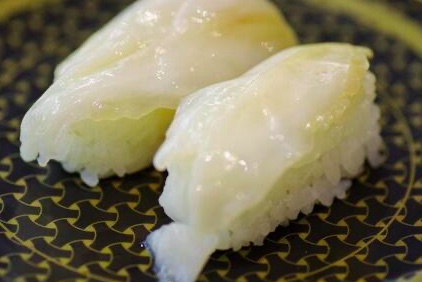
- Approx. 6g
- Cost ratio 54
- About 27 yen per piece
- About 54 yen per plate
Shellfish such as whelks also have a high cost ratio.
Red clams and whelks. All of them are quite expensive.
Also, I have the impression that the grams are getting smaller and smaller.
However, the price varies quite expensive a bit depending on the place of origin.
Buri or sea bream
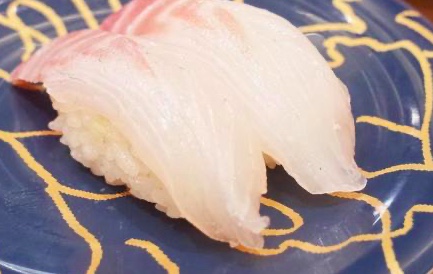
- Approx. 8g
- Cost ratio 50%.
- About 24 yen per piece
- About 50 yen per plate
Buri and tai are surprisingly inexpensive, depending on the season, if they are wild caught.
However, yellowtail and sea bream used at conveyor-belt sushi restaurants are quite fatty.
Considering the stable supply, they are considered to be farm-raised yellowtail.
Therefore, they are quite expensive.
Engawa
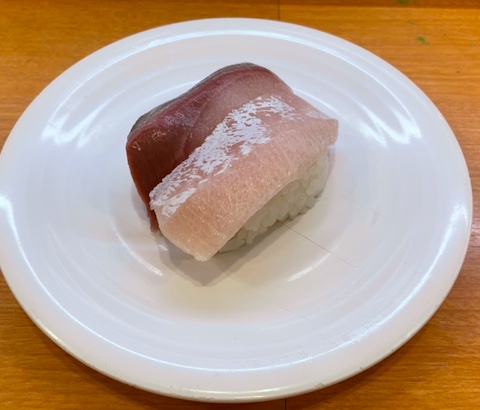
The famous Engawa is another high-cost item.
In the past, flatfish engawa was the mainstream.
Recently, since flounder is expensive, some places use abura- flounder.
Since it has become more costly, it is much smaller.
- About 6g to 5g
- Cost ratio 40
- About 20 yen per piece
- About 40 yen per plate
Flathead flounder and abura flounder are large flounder caught in North America and other areas. They are costly, but we cut them into small pieces and use them.
By cutting them into small pieces, we are able to keep the cost down.
That is why they are ranked in this order.
Salmon

Salmon comes in fifth place.
- Approx. 8g
- Cost ratio 40
- About 20 yen per piece
- About 40 yen per plate
Salmon is as popular as ever.
It is about the same as Engawa, but the price changes a little more when it is cut in the restaurant. Recently, some places cut it in the store, and those are tasty. The ones that use frozen sliced fish have an average taste.
In-store slicing is still the best!
Conclusion
Tuna is a trademark dish, so even if it is unprofitable, it is served at a low price.
That is why I ranked it as first in this year’s ranking.
Also, Engawa itself is a high cost item, even though it is imported.
Recently, Engawa has been replaced with Abura Flounder instead of Flathead Flounder, or cut into smaller pieces to reduce the cost.
I used to eat engawa all the time, but I am not quite satisfied these days.
Most places cut the tuna in the restaurant, and many places use raw sardines and horse mackerels as well.
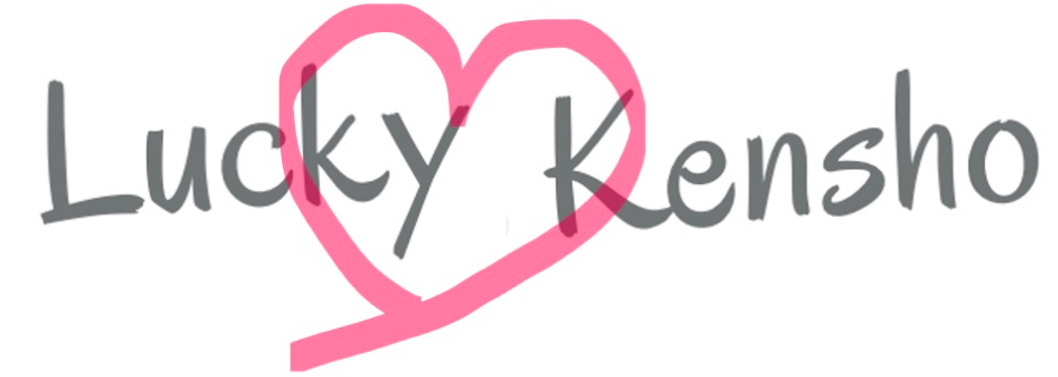
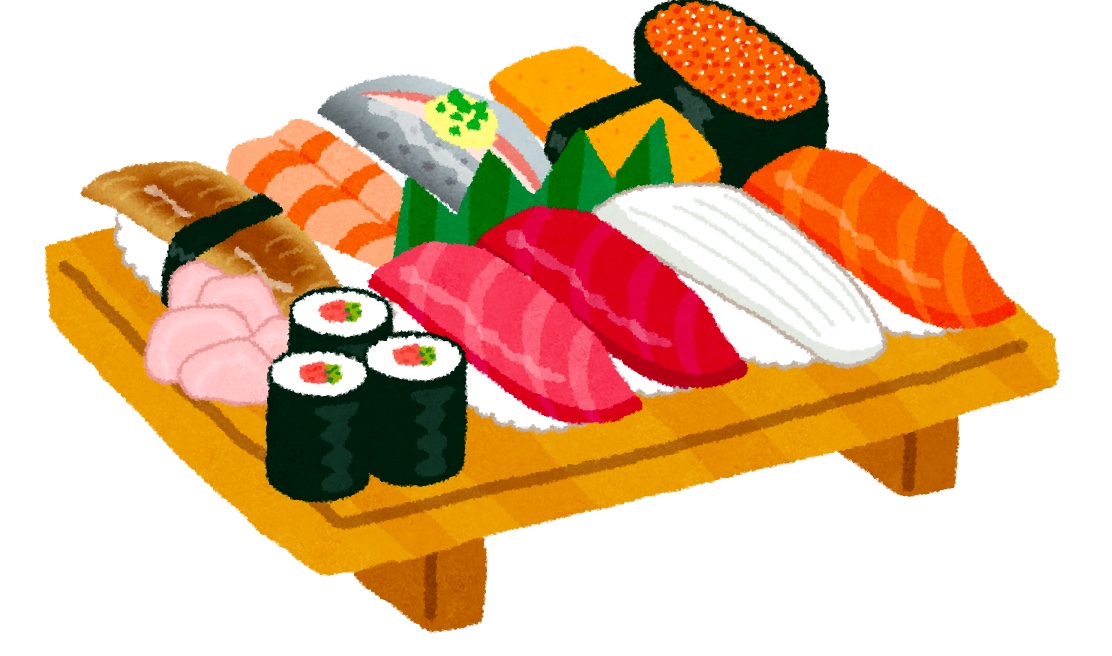


Comments